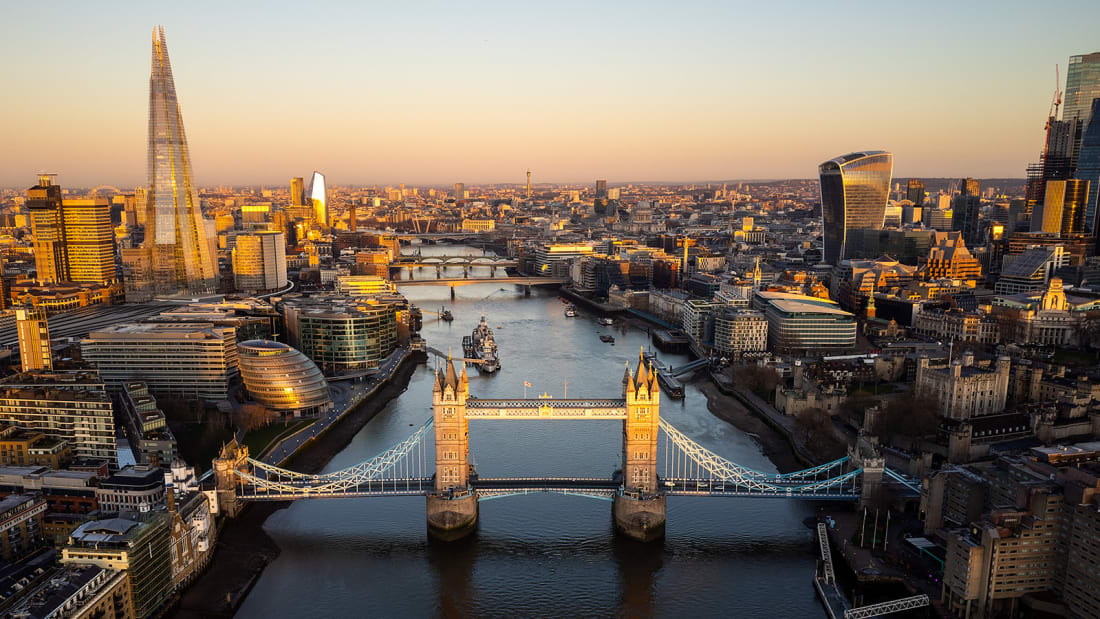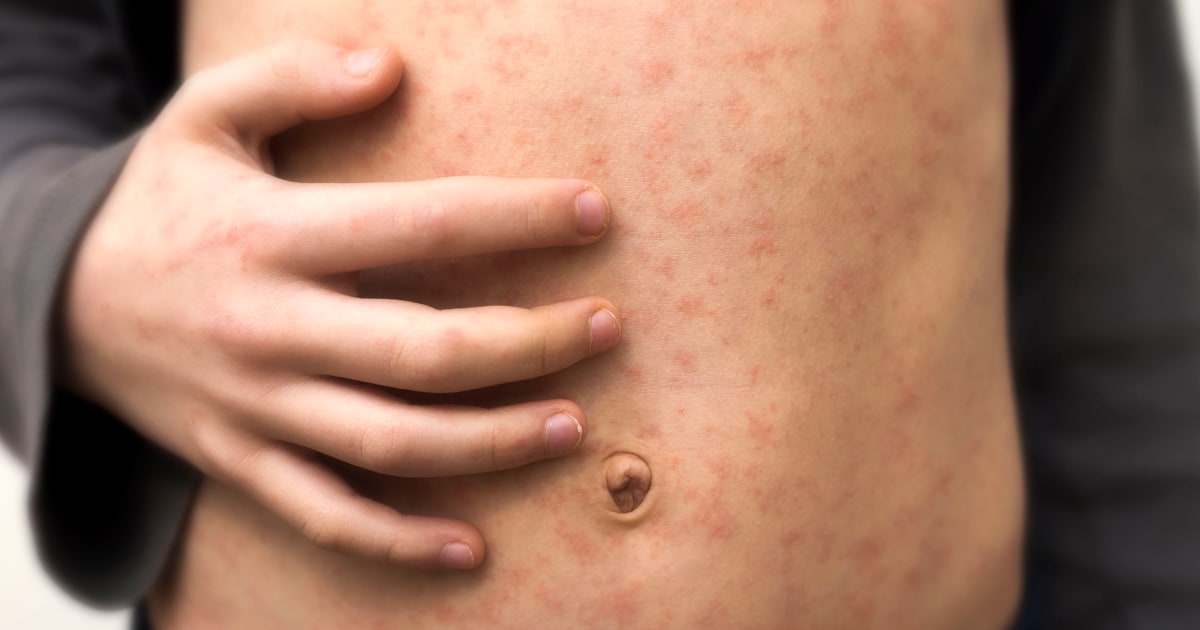Can Bahrain become a tourist hub?
1:04
(CNN) --
The US Centers for Disease Control and Prevention (CDC) unveiled its new travel risk assessment system on Monday.
Many European countries are now considered "high" risk for Covid-19, along with other iconic destinations around the world.
The new system classifies destinations into the following categories:
Level 3: high risk of covid-19
Level 2: moderate risk of covid-19
Level 1: low risk of covid-19
Unknown: there are not enough data to assess the risk
The big change occurs at level 4, which was typically used for places considered "very high" risk for travellers.
Level 4 will no longer be commonly used for that purpose.
Instead, the level 4 warning is reserved, in the new system, only for exceptional circumstances.
advertising
These circumstances include "extremely high case counts, the emergence of a new variant of concern, or the collapse of health infrastructure," the CDC said.
"Other factors that can be considered include information such as vaccination rate and hospitalization rate."
The CDC did not assign any destinations to level 4, "Special Circumstances/Do Not Travel," on its travel advisory website on Monday.
Tiers 3, 2, and 1 will continue to be primarily determined by the previous 28-day incidence or case count formula.
The review comes against a backdrop where US government agencies and the public continue to react and adapt to an ever-changing, and at times strongly disagreeing, pandemic.
On Monday, a federal judge in Florida struck down the Biden administration's mask mandate for airplanes and other methods of public transportation, and an administration official says the order is no longer in effect while the ruling is reviewed. .
Level 3
On the island of Langkawi, Malaysia, currently at level 3, you can see the traditional and colorful Asian fishing boats.
Credit: vasilygureev/Adobe Stock
Under the new system, the level 3 "high" risk category applies to destinations that have had more than 100 cases per 100,000 residents in the last 28 days.
Among the Tier 3 countries is
France
, which was the most visited country in the world in 2019 before the pandemic, according to the UN World Tourism Organization.
But other classic destinations on the European tourist scene are also in the "high" risk category.
On April 18, including:
Germany
Spain
Greece
Ireland
Italy
Portugal
United Kingdom
An aerial view of London and the River Thames.
The UK was at Tier 3 ("high" risk) on April 18, 2022. Credit: Wayne H/Adobe Stock
Europe's favorite destinations are not alone in this new list.
Other popular destinations around the world that are also at level 3 are:
Brazil
Canada
South Korea
Egypt
Malaysia
Mexico
Thailand
In all, there were just over 120 destinations on level 3, as of late Monday afternoon.
The CDC reports about 235 locations total.
The CDC advises that you be up-to-date on your COVID-19 vaccinations before traveling to a Tier 3 destination. "Up-to-date" includes not only your initial vaccination schedule, but also any boosters for which you are eligible.
The CEO of Pfizer hopes that the vaccine against covid-19 will be applied annually, instead of frequent reinforcements
The CDC does not include the United States in its list of recommendations.
Level 2
Mi Teleférico is a cable car in the city of La Paz, Bolivia.
This South American country is at level 2.
Credit: saiko3p/Adobe Stock
Destinations in the "Tier 2: Moderate Risk of COVID-19" category are reporting 50 to 100 COVID-19 cases per 100,000 residents in the past 28 days.
This Monday it only had 11 destinations, spread all over the world.
They stand out among them:
bolivia
Turks and Caicos Islands
Peru
South Africa
Sri Lanka
You can check the CDC's risk levels for any global destination on their travel advice page.
In its broader travel guidance, the CDC has recommended avoiding all international travel until fully vaccinated.
If you are concerned about a health situation unrelated to covid-19, consult here.
Level 1
Looking to visit a country currently at level 1?
Think Kenya.
Here, elephants roam in front of Mount Kilimanjaro in the Amboseli National Park.
Credit: Dan/Adobe Stock
This tier is dominated by destinations in Africa and had almost 55 entries in the first week under the new system.
To be in "Tier 1: Low risk of COVID-19", a destination must have 49 or fewer new cases per 100,000 residents in the last 28 days.
Some of the highlights are:
Colombia
India
Jamaica
Kenyan
Philippines
Dominican Republic
Senegal
A stranger
Finally, there are destinations that the CDC categorizes in the "unknown" risk level, due to lack of information.
These are usually, but not always, small, remote places or places with ongoing warfare or unrest.
The
Azores, Cambodia and Nicaragua
are some of the places currently listed in the unknown category.
The CDC advises against traveling to these places precisely because the level of risk cannot be estimated.
A medical expert weighs in on risk levels
Transmission rates are "a benchmark" for estimating travelers' personal risk, according to Dr. Leana Wen, a CNN medical analyst.
"We are entering a phase of the pandemic where people need to make their own decisions based on their medical circumstances as well as their risk tolerance for contracting Covid-19," Wen said in mid-February.
"Level 4 should be interpreted to mean that it is a place with a lot of community transmission of Covid-19. So if you go, there is a higher chance that you can get the coronavirus," said Wen, who is an emergency room doctor. and Professor of Health Policy and Management at the George Washington University Milken Institute School of Public Health.
Some people will decide the risk is too high for them, Wen said.
Other people will say, "Because I'm vaccinated and boosted, I'm willing to take that risk."
"So this really has to be a personal decision that people make with the understanding that right now the CDC is classifying the different tiers based on community transmission rates, and basically just that," Wen said.
"They're not taking individual circumstances into account."
Travel Considerations
Transmission rates are important to consider when making travel decisions, but there are other factors to weigh as well, according to Dr. Leana Wen, a CNN medical analyst, emergency physician and professor of health policy and management. at the George Washington University Milken Institute School of Public Health.
"Transmission rates are a guide," Wen said.
"Another is what precautions are required and followed where you're going and then the third is what you plan to do once you're there.
"Do you plan to visit a lot of attractions and go to closed bars? That's very different than going to a place where you plan to be on the beach all day and not interact with anyone else. Those are very different levels of risk."
Vaccination is the most important safety factor for travel, as unvaccinated travelers are more likely to get sick and spread COVID-19 to others, Wen said.
He further said that people should wear a high-quality mask (N95, KN95, or KF94) whenever they are in crowded indoor settings with unknown vaccination status.
Before you travel, it's also important to consider what you would do if you end up testing positive away from home, Wen said.
Where will you be staying and how easy will it be to get tested to return home?
-- CNN's Tierney Sneed contributed to this report.
CDCCovid-19















